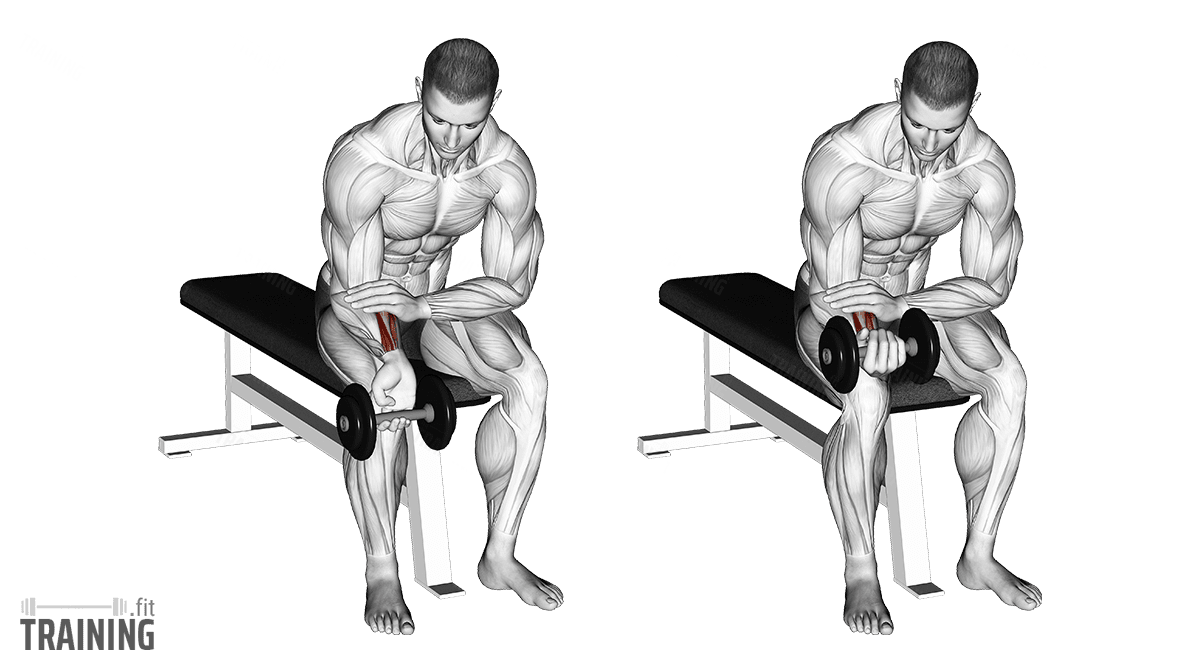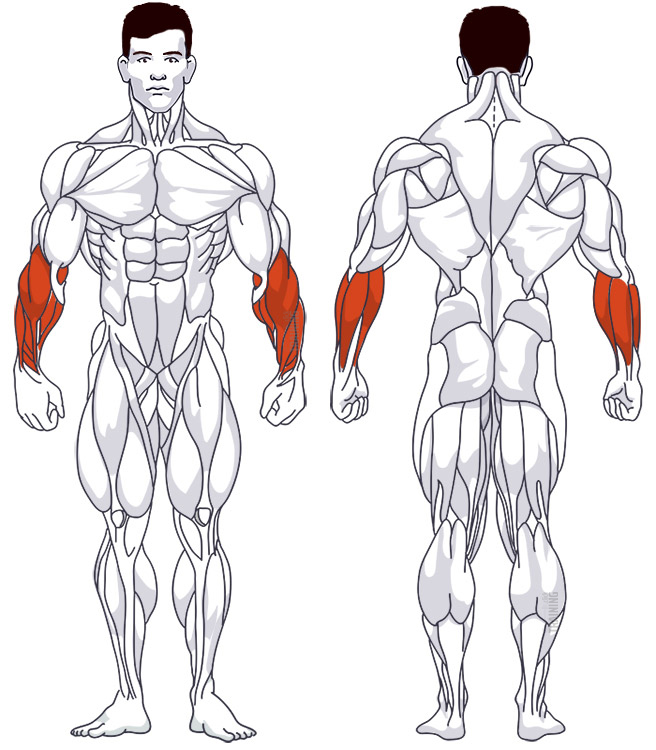Wrist Curls with Dumbbells
Isolation exercise, Free weightsOverview

Main muscles
- Forearm: Finger extensor
(Musculus extensor digitorum) - Forearm: Short radial hand extensor
(Musculus extensor carpi radialis brevis) - Forearm: Long radial hand extensor
(Musculus extensor carpi radialis longus) - Forearm: Brachioradialis
(Musculus brachioradialis)
Training plans
Wrist Curls with Dumbbells is a suitable substitute for similar exercises in or as a supplement to various training plans.
Wrist Curls with Dumbbells: Basics and alternatives

Involved main muscle groups:
Wrist Curls with Dumbbells
Dumbbell wrist curls are a fantastic isolation exercise for targeting your forearm flexor and extensor muscles. The motion is similar to other wrist curls, with your forearm resting on your thigh while you bend and extend your wrist.
There are plenty of other options for training grip strength and forearms, such as barbell overhand wrist curls, cable wrist curls, or fitness band wrist curls—perfect for home workouts. All of these exercises have a similar motion and muscle focus, so the best choice depends on the equipment you have available.
Correct execution
Should you use an underhand or overhand grip for dumbbell wrist curls? The ideal answer is to train both grip variations. The underhand grip focuses on the forearm flexors with a bending movement, while the overhand grip targets the extensors through extension.
To maintain balance, incorporate both grip variations in your training plan.
Another way to vary dumbbell wrist curls is by engaging your fingers. With the underhand grip, you can slightly open your hand and perform finger curls to further strengthen your grip.
Video tutorial
Step-by-step instructions
Grab the dumbbells and sit up straight on a weight bench.
Rest your forearm on your thigh and rotate it so you’re holding the dumbbell with an underhand grip (palm facing up). Your wrist and the dumbbell should extend beyond your knee.
Grip the dumbbell firmly and lower your wrist. You’re now in the starting position.
Bend your wrist and lift the dumbbell upwards. Hold briefly, then lower the weight back down in a controlled manner.
Common mistakes
With all wrist curls, ensure your movements are slow and controlled. Avoid swinging or jerking the dumbbell, as it could slip from your hand or cause a wrist injury. Smooth, controlled motions are key to injury-free training.
This is especially important when incorporating finger curls into the exercise. Since this reduces your control over the dumbbell, it’s a good idea to start with a lighter weight to avoid straining your tendons or muscles.